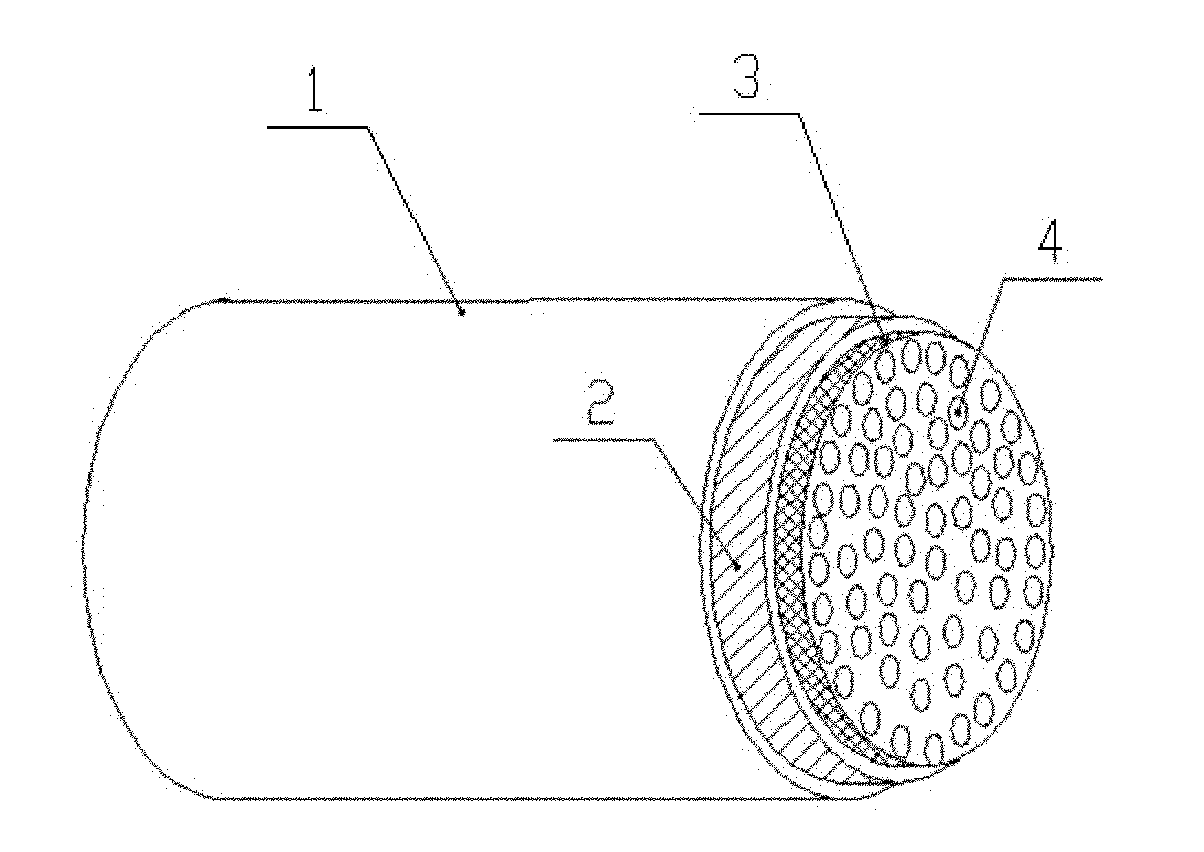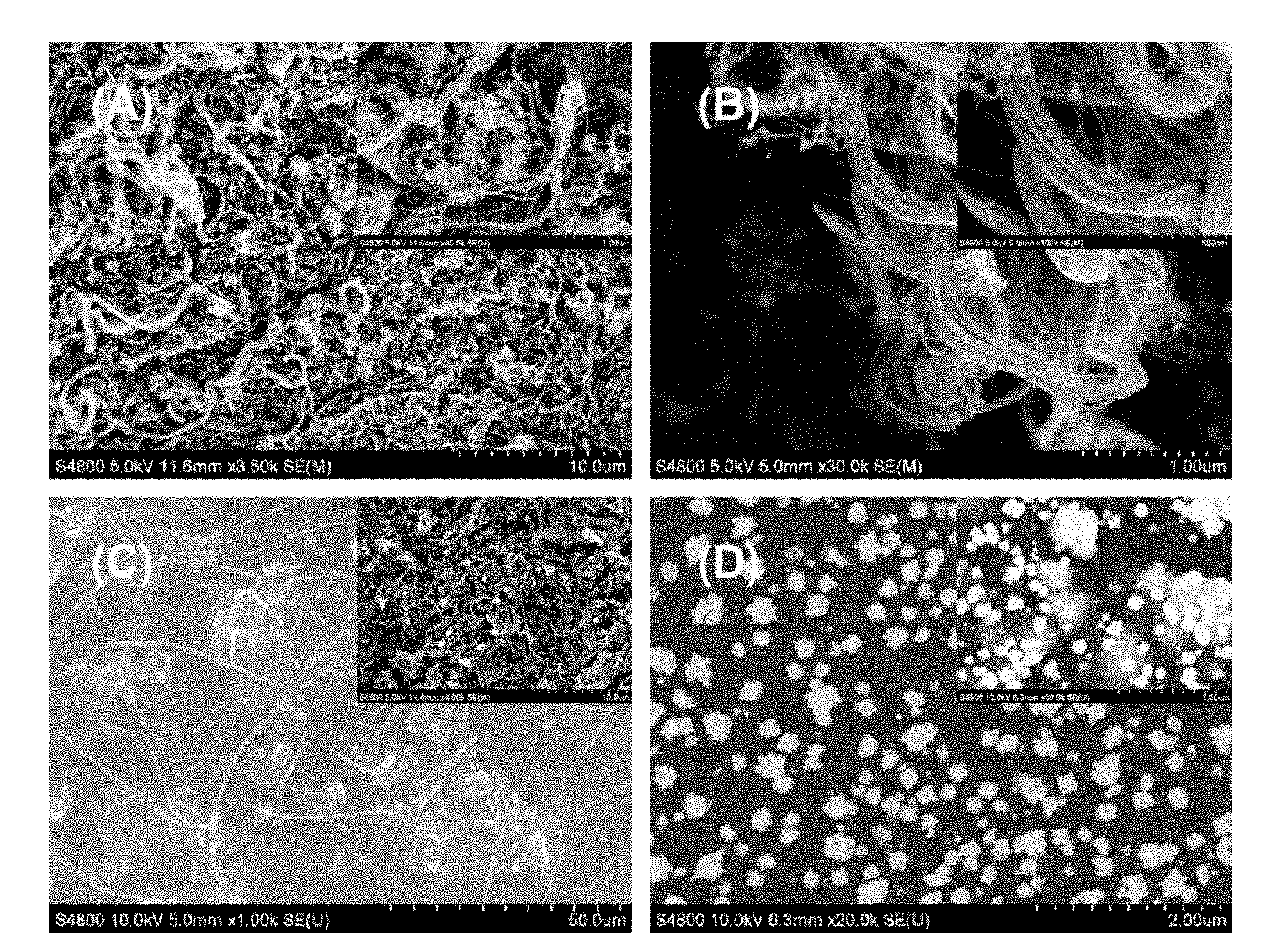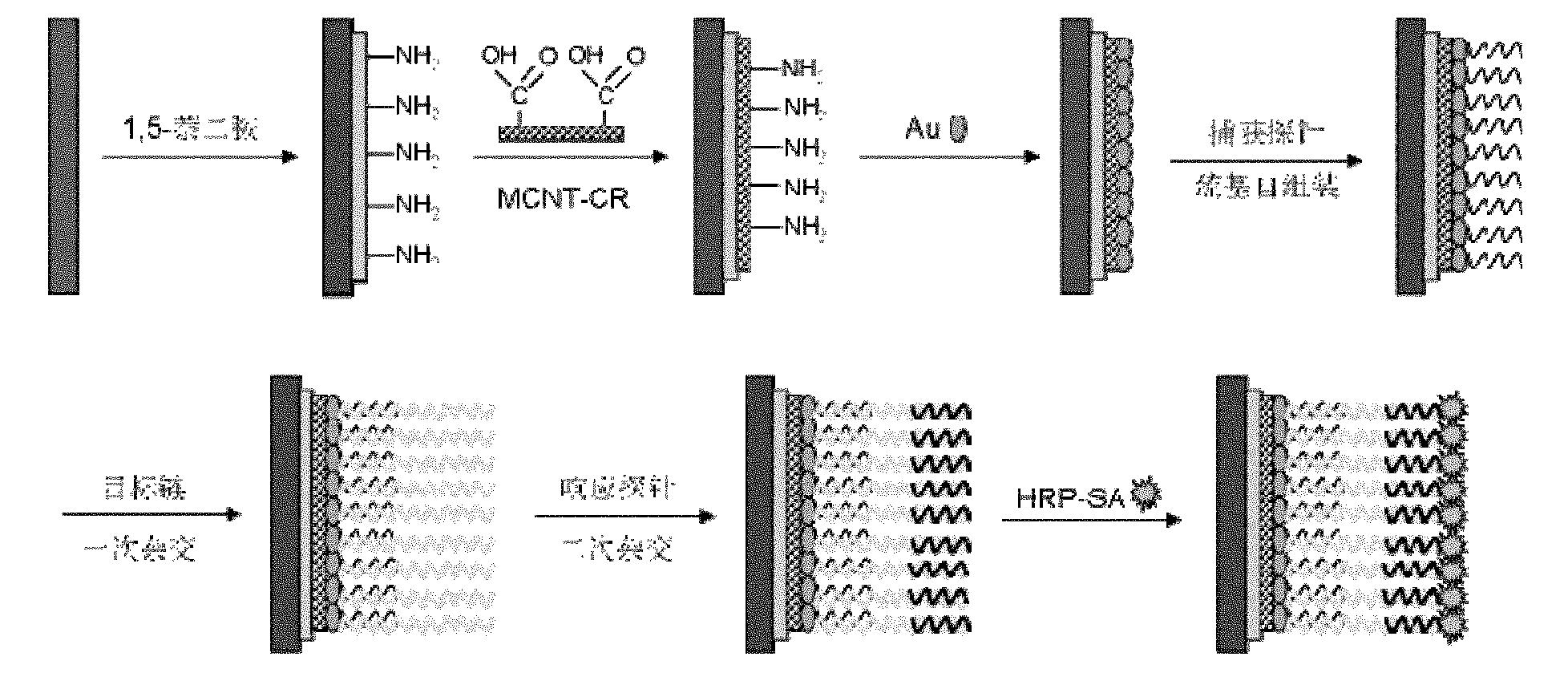Composite membrane modified biosensor and preparation method and application thereof
A biosensor and composite membrane technology, applied in the field of biosensors, can solve the problems of difficult gene sequence detection, inability to conduct online monitoring, and difficulty in analysis and detection, and achieve the effects of improved detection sensitivity, convenient production, and broad application prospects
- Summary
- Abstract
- Description
- Claims
- Application Information
AI Technical Summary
Problems solved by technology
Method used
Image
Examples
Embodiment 1
[0053] a kind of like figure 1 The biosensor modified by the composite membrane of the present invention includes a base electrode 1, the base electrode 1 of this embodiment is a glassy carbon electrode, and the sensing end of the base electrode 1 is coated with a 1,5-naphthalene diamine A polymer film 2, the 1,5-naphthalene diamine polymer film 2 is decorated with a multi-walled carbon nanotube-Congo red combination layer 3, and the multi-walled carbon nanotube-Congo red combination layer 3 is adsorbed with nano Gold particle layer 4.
[0054] The biosensor of this embodiment is prepared through the following steps:
[0055] (1) Glassy carbon electrode pretreatment: use conventional methods to pretreat the glassy carbon electrode. Specifically, in this example, the glassy carbon electrode is first suspended on the polishing paper with 0.3 μm and 0.05 μm alumina Polished to the mirror surface, and then sequentially with nitric acid solution (HNO 3 :H 2 O=1:1), absolute eth...
Embodiment 2
[0062] a kind of like image 3 The application of the biosensor modified by the composite membrane of the present invention in the detection of lignin degrading enzymes (this embodiment specifically detects cellobiose dehydrogenase CDH) coding genes specifically includes the following steps:
[0063] (1) Design probe sequences, target strands and PCR amplification primers: select all coding gene sequences corresponding to the CDH produced by Phanerochaete chrysosporium in GenBank, and use DNAMAN software and NCBI BLAST server for sequence comparison, Determine the conserved region of the coding gene sequence corresponding to CDH, and then use Primer Premier 5.0 and Oligo 6.0 software to design capture probes, response probes, target strands, mismatched strands, and PCR primers for the functional genes encoding CDH. All gene sequences were synthesized by Shanghai Sangon Bioengineering Company. The design results are shown in Table 1 below:
[0064] Table 1: Probe sequences, t...
Embodiment 3
[0089] In Example 3 of the present invention, inoculate and cultivate the strain Phanerochaete chrysosporium producing lignin-degrading enzymes, then extract its total DNA, and perform PCR on a shorter fragment containing the target chain gene through a pair of specific amplification primers Amplify, and its product is used as the target chain gene to be tested, and then use the biosensor of Example 1 and the specific method of Example 2 to investigate the specificity and sensitivity of the present invention for the detection of actual cultured products.
[0090] The application of the composite membrane-modified biosensor of this embodiment in the detection of culture products containing lignin-degrading enzyme coding genes specifically includes the following steps:
[0091] (1) Solid-state culture of Phanerochaete chrysosporium: Prepare PDA medium: 20g of potatoes, 2g of glucose, 2g of agar and 100mL of distilled water; fully dissolve the above components, autoclave at 120°C ...
PUM
| Property | Measurement | Unit |
|---|---|---|
| Particle size | aaaaa | aaaaa |
| Upstream primer | aaaaa | aaaaa |
Abstract
Description
Claims
Application Information
 Login to View More
Login to View More - R&D
- Intellectual Property
- Life Sciences
- Materials
- Tech Scout
- Unparalleled Data Quality
- Higher Quality Content
- 60% Fewer Hallucinations
Browse by: Latest US Patents, China's latest patents, Technical Efficacy Thesaurus, Application Domain, Technology Topic, Popular Technical Reports.
© 2025 PatSnap. All rights reserved.Legal|Privacy policy|Modern Slavery Act Transparency Statement|Sitemap|About US| Contact US: help@patsnap.com



